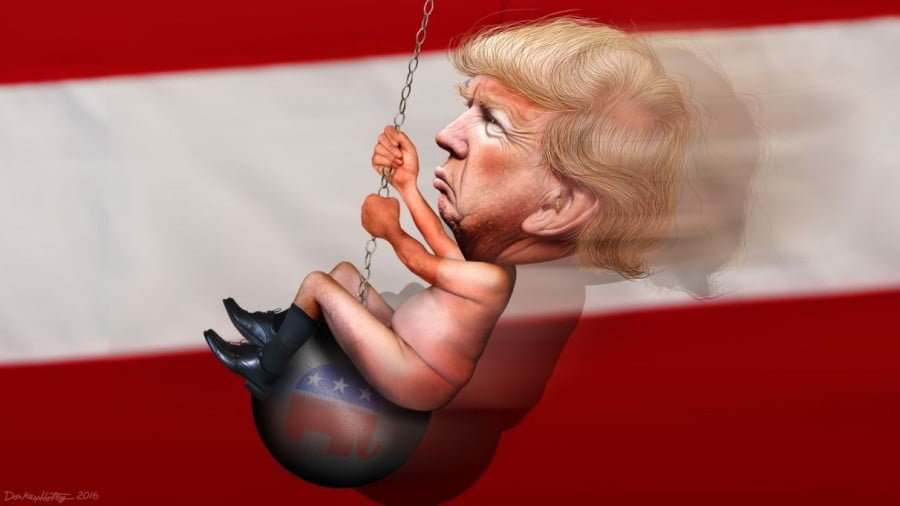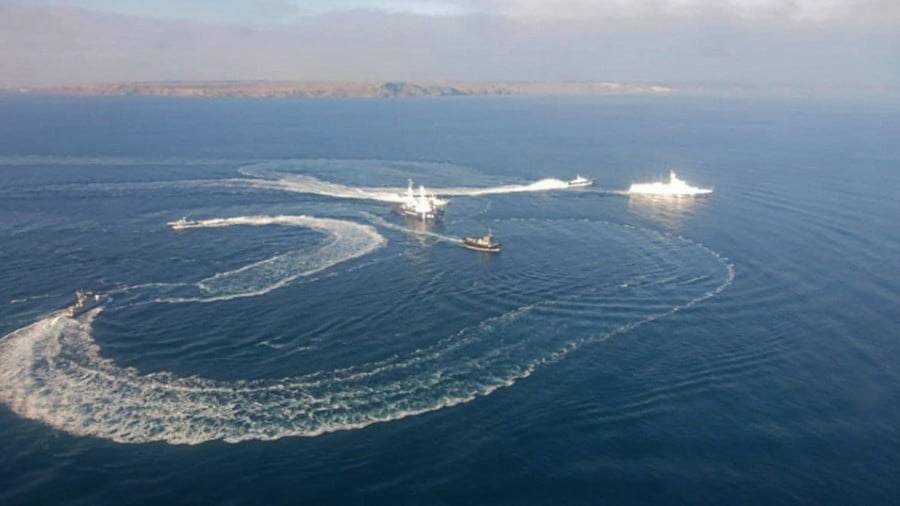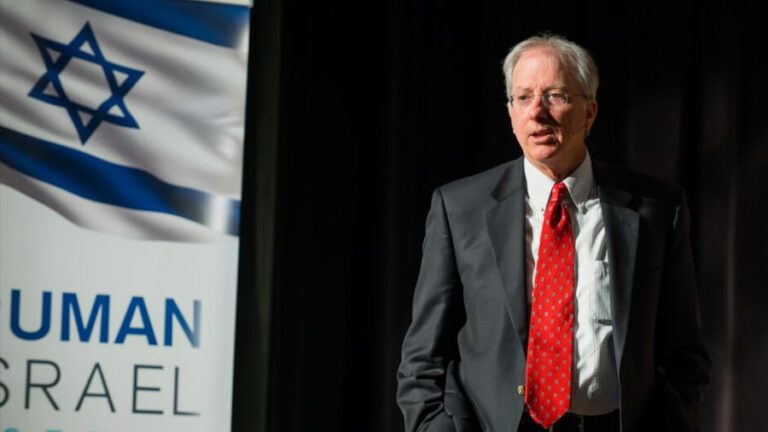Peru General Election Campaign: Tight Race Between Left and Right
While there is no “indigenous identity” third candidate in Peru’s June 6 run-off, the two candidates remaining are as far apart as Lasso and Arauz. The winner will assume the presidency on July 28.
The current election in Peru between two extremely opposite candidates is uncannily similar to Ecuador’s on April 11. Nearly at the last minute, the millionaire conservative Guillermo Lasso, former banker and Coca Cola director, won the run-off election over socialistic candidate Andres Arauz, 52.5% to 47.5%.
Arauz had led the pack of 16 presidential candidates during the first round with 32.7% of the vote over Lasso’s 19.74%. Arauz was Union of Hope (UNES) candidate, a new party that former President Rafael Correa (2007-17) and Arauz had started.
Indigenous leader, Yaku Pérez, had come in third during the run-off. His decision that his supporters should vote blank in the run-off made the difference in favor of the millionaire, a sad example of how “identity politics” can be used as a tool for big capital.
While there is no “indigenous identity” third candidate in Peru’s June 6 run-off, the two candidates remaining are as far apart as Lasso and Arauz. The winner will assume the presidency on July 28.

Pedro Castillo Terrones, 51, a rural schoolteacher and peasant farmer surprisingly led the race of 18 candidates on election day, April 11. The leftist candidate for Peru Libre (Free Peru) party obtained 19% of the votes. His party’s logo is the teacher’s pencil.

Coming in second place is Keiko Fujimori, 46, with 13.36%. She is one of many rightest candidates. She ran on the Fuerza Popular (Popular Force) party, which she founded in 2011 as a successor to her father’s party. Alberto Fujimori ruled between 1990 and 2000.

Fujimori’s daughter has remained faithful to her father throughout his presidency and in prison. During Alberto Fujimori’s reign, he ordered death squads to massacre peasant opponents to his dictatorial rule. Charged with 51 crimes, Fujimori received a 25-year sentence for crimes against humanity and corruption, which he began serving in 2009.
Although this election had more presidential candidates (18) than ever, 28% of voters do not want any of them, according to a poll by Institute of Peruvian Studies. Seventy percent of the 25,193,971 registered voters cast ballots. In 2016 elections nearly 82% voted.
Peru has 33 million people, 60% of whom are considered mestizos (Indigenous-Spanish mix), 26% are indigenous (15% Quechua descendants of Incas, along with several other original peoples, including half-a-million Aymaras); six percent white; four percent black; and several thousands of Chinese, Japanese, Arabic descent and others.
Peru Libre won 37 seats in the 130-member legislature with 14% of the votes.
Fuerza Popular won 24 seats with 11% of the votes, down from 37 in 2011 elections, and from an absolute majority in 2016 with 73 seats.

Castillo was able to best another leftist candidate, Veronica Mendoza of Junta (Together with Peru) party because peasants can identify with him, His discourse is that of a “man of the people” while Mendoza’s is more academic. She was also in congress and people are sick of politicians. Castillo led an important teacher’s strike in 2017. His spent only $8000 on his campaign before the run-off.
Castillo advocates an economic model similar to Evo Morales in Bolivia and Rafael Correa in Ecuador. He will nationalize strategic natural resources, and review mining projects. He also proposes a new constitution. He has contradictions socially by arguing against abortion and gay marriage, and is against gender equality as an issue in the educational curriculum.
The media hadn’t counted on Castillo having a chance. However, in the final days of the election, he rose in the polls despite mass media’s depiction of him having links with MOVADEF. (Movement for Amnesty and Fundamental Rights) (1)
Keiko Fujimori is the business class’ “democratic option”. She promotes neo-liberalist policies, and sees the United States as Peru’s strongest ally. Indigenous peoples remember her as the loyal daughter of the president who forced 300,000 indigenous women and 20,000 indigenous men to be sterilized under the so-called “voluntary surgical contraception” program.
According to Wikipedia, Forbes, IMDb & Various Online resources, Keiko Fujimori’s net worth is $1-5 Million at the age of 44 years old. “She is one of the Richest Politicians who was born in Peru…She earned the money being a Professional Politician.” These corporate sources do not mention her criminal involvement in money laundering and bribes she received for which she was imprisoned pending trial.
Major Issues: Political Instability, Covid-19, Recession, Corruption, Immigration
In the last five years, there have been four presidents. Only one, Pedro Pablo Kuczynski, was actually elected. In 2015, he renounced his dual U.S. citizenship to run for the presidency. He narrowly beat Fujimori’s daughter, Keiko, in June 2016. Kuczynski resigned in March 2018 after two attempts to impeach him—first for taking moneys illegally from the Brazilian Odebrecht construction company, then another corruption charge plus widespread discontent that he pardoned the mass murdering president, Fujimori, in December 24, 2017, for “humanitarian” reasons.
On October 3, 2018, the Supreme Court overturned the pardon, and Fujimori was returned to prison. Kuczynski was imprisoned in pre-trial detention in April 2019 for receiving bribes from Odebrecht. Later placed in house arrest due to health conditions, some of his property was seized by the court.
Following Kuczynski’s resignation, the first vice-president, Martin Viscarra, replaced him. More independent than most in the legislature, he promoted reforms against corruption in the congress and judiciary causing outrage among politicians and judges.
Peru is one of the worst affected nations in the Americas by the COVID-19 pandemic. Socioeconomic circumstances are a main cause of this. One-third of the population live in overcrowded homes; 70% of the work force have informal jobs with few or no benefits or tax payments; only half of households have refrigerators or freezers and many people must find/buy food on a daily basis.
Due to a second wave of corona infections by January 2021 intensive bed occupancy rose to 90%. Medical workers struck due to harsh work conditions.
President Vizcarra instituted stay-at-home orders. He provided relief funds. GDP fell 30%. Massive inequality, an inadequate health-care system, and corruption in the health ministry in applying vaccines has caused many deaths. Today, nearly two million inhabitants have been infected, and 65,000 have died.
In September 2020 Congress opened impeachment proceedings against Vizcarra on grounds of “moral incapacity”, accusing him of influence peddling. Although there were insufficient votes to remove him, his reputation as an effective leader plummeted.
On November 9, 2020, congress impeached Vizcarra a second time, declaring him “morally incompetent”. This time, he was removed from office. Some of those who voted against him had been targeted for their corruption.
Congressman Manuel Merino succeeded him. There is so much corruption—politicians are infamous for such—that many commentators and ordinary people believed charges against Vizcarra were trumped up. Some media called the process yet another coup. These developments incited massive protests, and grew once policemen murdered two demonstrators. In further protests, police injured demonstrators and three dozen journalists, shooting some with shotgun pellets and tear gas. On the fifth day of Merino’s presidential tenure, he resigned. One of the few congressmen who voted against impeaching Viscarra, Francisco Sagasti, was named president by a split legislature.
Sagasti had been chief of the World Bank’s strategic planning division. As such, the centrist promotes capitalist austerity policies. Sagasti leads the Morado Partido (Purple Party). He has concentrated on improving measures to combat Covid-19. The U.S. approves his economic and foreign policies.
Keiko Fujimori studied business administration in the United States where she lived off and on for many years. Upon returning to Peru, she worked with her father. She took over the position of first lady (1994-2000) once the president divorced his wife, Susana Higuchi. Keiko was in congress from 2006 to 2011 when she ran for the presidency. She came in second place then, as in 2016.
On October 31, 2018, Keiko was sentenced to 36 months preventive imprisonment for obstruction of a judicial investigation into money laundering and bribery with intent to change witness testimony. She was released to house arrest on January 11, 2019. She was later returned to prison. When hospitalized with corona, she was again released to house arrest, and once recovered could campaign for the presidency.
Public prosecutor José Domingo Pérez seeks a 30-year sentence for her accepting $1.2 million from the Odebrecht real estate/construction firm, which illegally financed her political party. An agreement was reached between Odebrecht and Peru’s Justice Ministry in 2019. That agreement would allow Odebrecht to continue working in Peru with public work contracts once it turns over documents and testimonies that show how Keiko Fujimori and ex-presidents received money illegally that they were offered.
According to Wayku, Fuerza Popular congresswoman Martha Chávez is attempting to get the current parliament—largely conservative and rightest—to change that agreement to favor her presidential candidate. “Martha Chavez would have Odebrecht to stop confessing how Keiko received illicit money – Wayka”.
Immigration
On March 9, 2015, President Barak Obama declared Venezuela a threat to national security, and invoked the first of escalating sanctions against hundreds of Venezuelan companies, individuals, vessels and its oil.
Due mainly to increasingly severe sanctions under Trump’s regime, Venezuelans lack food, medicines and other necessities, even oil/petroleum to sustain bare minimum living standards. As such, since 2015 over one million people flee annually to neighboring countries.
Peru has over one million Venezuelan refugees. Peru’s armed forces joined with Ecuador’s under the right-wing Lenin Morena government to prevent more migrations by posting soldiers at their borders to Colombia.
Many people worry that the U.S. will punish them if they back Venezuela’s elected President Nicolás Maduro. Today, U.S. sanctions all Venezuelan exports (92% oil, most of the rest is gold), and most of its imports, as well as freezing its assets in U.S. and England banks. This aggression is compounded by the U.S. (and 70 of its allies) recognizing Juan Guaídó as president of the country.
Guaidó was elected to the 2015 congress on a Voluntad Popular (Popular Will) ticket with 26% of the votes in Vargas state (350,000 population.) On January 23, 2019, the 35 year-old assemblyman simply announced he was taking over the presidency, on an interim basis, without any election.
U.S. and England recognize only Guaidó as having “the right” to use Venezuela’s state funds that they have frozen. The assumption is that he will one day become president, by hook or crook, probably through a U.S.-backed military coup.
Guaidó has called for U.S. military intervention, and there have been a handful of clumsy coup attempts. Recent polls of Venezuelans living in the country showed only 4.1% consider him capable of ruling their nation.
Truth and Reconciliation Commission
The mass media and rightest politicians think they can get their candidate, Keiko Fujimori, elected by smearing Castillo as a supporter of Sendero Luminoso (Shining Path).
The Truth and Reconciliation Commission (CVR) was established by interim president Valentin Paniagua, in November 2000, following Fujimori’s abdication. The dozen investigators are part of the Establishment. They investigated actions by the Shining Path, Túpac Amaru Revolutionary Movement (MRTA), and the military-police.
At its peak, Shining Path had 10,000 insurgents and dominated nearly half the country. It killed many government police and military but also many peasants not aligned with it.
MRTA’s most ambitious and proclaimed action, and the major cause of its eventual demise, was taking over the Japanese embassy residency. During a party celebrating Japan’s emperor’s birthday on December 17, 1996, 14 members of the guerilla group, led by co-leader Victor Polay Campos, captured 800 dignitaries (politicians, diplomats, military officers and rich businessmen).
During negotiations, the rebels released all women, and most of the men, keeping only 72 hostages. MRTA sought the release of 450 imprisoned members of their organization.
U.S. military in the area assisted the Peruvian army with various rescue plans. Finally, on April 22, 1997, a 140-man Peruvian army commando team raided the residency. The rebels did not wish to kill hostages. The only casualties were themselves, one hostage and two soldiers. All 14 rebels were killed on Fujimori’s orders, half of them executed.

On August 28, 2003, the Truth and Reconciliation Commission “reported on the estimated 70 000 deaths, assassinations, torture, disappearances, displacement, employment of terrorist methods and other human rights violations executed by the State, Shining Path, and MRTA. The report concluded that there is both “institutional and individual accountability, as well as identifying racial and cultural factors that became a catalyst for conflict.” The CVR investigation was financed by some of $360 million discovered in foreign accounts, which had been stolen by Fujimori officials.
A 2019 study disputed CVR casualty figures, reporting instead “a total of 48,000 killings, substantially lower”, and concluded that “the Peruvian State accounts for a significantly larger share than the Shining Path,” more than the 28% attributed to the military and police reported by CVR.
Alberto Fujimori
Although Fujimori won the July 2000 runoff with a bare majority, irregularities led most of the world’s governments to shun his third swearing-in on 28 July. Daily demonstrations took place in front of the presidential palace for many weeks. As a conciliatory gesture, Fujimori appointed former opposition candidate Federico Salas prime minister. Opposition parties in Congress refused to support this move, and former President Toledo led the campaign to have the election annulled.
On 13 November, Fujimori left Peru for a visit to Brunei to attend the Asia-Pacific Economic Cooperation forum. On 16 November, Valentín Paniagua took over as president after the pro-Fujimori leadership lost a vote of confidence. On 17 November, Fujimori traveled from Brunei to Tokyo where he submitted his presidential resignation via fax. Congress refused to accept his resignation, instead voted 62–9 to remove Fujimori from office on the grounds that he was “permanently morally disabled.” Japan granted him exile status and citizenship. Where and when Fujimori was born is still a contested issue—either in Japan or Peru.

Wanted in Peru on charges of corruption and human rights abuses, Fujimori maintained a self-imposed exile until his arrest while visiting Chile in November 2005. Fujimori believed conditions in Peru were favorable for him to run for the presidency. Chilean authorities arrested Fujimori, however, when Peru requested his extradition, which happened on September 22, 2007.
In December 2007, Fujimori was convicted of ordering an illegal search and seizure and was sentenced to six years imprisonment. In April 2009, he was convicted of human rights violations and sentenced to 25 years imprisonment for his role in killings and kidnappings by the Grupo Colina death squad. This was the first time that an elected head of state had been extradited to his home country, tried, and convicted of human rights violations.
He faced a third trial in July 2009 over allegations that he illegally gave $15 million in state funds to Vladimiro Montesinos, which the disreputable former president admitted. Fujimori admitted guilt in another corruption trial in September. He received another six-year sentence, however under Peruvian law all prison sentences run concurrently.
Role of the United States
A United States Establishment organization, Council on Foreign Relations, 2009 background piece on Shining Path shows that “Washington pursued a policy of lending money and giving military aid to Peru to help the country’s government wage war against Shining Path. This policy continued even after President Alan Garcia’s administration defaulted on some of its loans, despite a longstanding U.S. policy making a country ineligible for aid if it failed to repay military assistance debt for more than a year.”

One of the last measures of President Obama’s reign was a permanent military presence in Peru. In December 2016, President Kuczynski let the U.S. build a military base in the Amazons. The U.S. Southern Command and the company Partenon Contratistas signed off a plan allegedly to assist the country during “natural catastrophes”, “under the sheepskin of the Centre for Operations for Regional Emergency”.
United States domination over Latin America began in 1823 with the “Monroe Doctrine”, part of U.S. “manifest destiny” so declared in 1812: expand America’s white man’s control of lands. In 1846-48, the U.S. warred upon Mexico and stole its northern half, which is now: Texas, New Mexico, Nevada, California, Colorado, Utah and Wyoming. Just between 1869 and 1897, the U.S. sent naval warships to Latin American harbors to intervene in internal affairs 5,980 times. (2)
“The United States no longer needs to launch wars to conquer and assert its hegemony on Latin American soil; now the region is brought to heel by far subtler means: through initiatives of covert militarization. In addition to its war against terrorism, Washington is using the fight against drug trafficking and its alleged commitment to respecting human rights as covers for intermeddling in the internal affairs of other countries… Peru is a vital platform to enable the United States to consolidate its plan to dominate the whole of South America,” wrote Ariel Noyola Rodríguez.
“Military cooperation between Washington and Lima is not restricted to setting up military bases; the United States has followed up by fully integrating itself into the [Peruvian] security and defense apparatus. Pursuant to authorization by Peru’s Ministry of Defense, special operation units of the Joint Command of Armed Forces, the Command of Intelligence and Joint Special Operations and the Special Unit, VRAEM, received training from U.S. forces between May and September 2016. …In tandem, the Peruvian forces have led countless joint military exercises with the United States.”
President Joe Biden has focused little on Latin America other than to encourage Mexico to prevent migrants from entering the U.S., and to continue sanctions against Venezuela, because of the “tyrant” Nicolás Maduro rule.
Biden’s administrations has not publically taken a position on the current election, but Peruvian activists mean that the “neighbor in the north” is quietly backing Keiko Fujimori. The National Endowment for Democracy, which works to subvert leftist governments worldwide, spent nearly $650,000 in Peru in 2020.
Pedro Castillo seeks an end to U.S.’s domination over its “backyard”. He also proposes to expel the Drug Enforcement Administration, and to end the phony “war against drugs”, which causes massive murders and more drugs. So much sovereignty is not for Keiko Fujimori.
Current Election Campaign
On May Day, the working class’ historic victory day, at Pedro Castillo’s request, he and Keiko Fujimori held an improvised debate in the plaza of his hometown and where he teaches, Choto. The northern city of some 50,000 was lively with mainly Castillo supporters.
The key issues discussed concerned: corruption, corona, the economy and crime. Castillo criticized the neoliberal economy for not providing decent working and living conditions for the majority, for the lack of adequate medical care generally and specially during the corona pandemic. His party will propose a new constitution that would make tax-supported medical care for all a human right.
Fujimori defended the current private health care system and the neo-liberal economy.
Castillo’s government would revise transnational contracts that exploit natural resources. The state, he said, would take 30% of the profits and protect the earth as much as possible. Fujimori said the current recession is not due to neo-liberal policies but to “lack of management”.
Regarding social insecurity and crime, Fujimori proposed greater punishments, while her opponent proposed more and better education.
Free Peru party and Pedro Castillo say they are receiving death threats. Extreme rightest presidential candidate of Popular Renewal party Rafael Lopez Aliaga contends that Pedro Castillo “shall not become president”, as he would never allow elections again. Castillo would be another “authoritarian Maduro” and run Peru like Venezuela and Cuba. Much of the MSM as this one, La Razón, regularly quote right-wingers, who maintain that Castillo is with Sendero Luminoso and its imprisoned leader, Guzman.
Castillo denies this. “We are not terrorists, communists or chavistas” [Hugo Chavez], he asserted.
Center-Liberal Popular Action party decided not to take a position on whom to support.

On May 5, Castillo’s Peru Libre and Mendoza’s Junta agreed to cooperate. Veronica Mendoza said: “What is at stake is not only Castillo Terrones’ victory, but of putting a brake on mafia and authoritarianism”, and she asserted that she doesn’t want a government with “people who are able to sabotage even vaccines.”
Castillo later stated that the controversial educational curriculum gender matter is not an issue in his campaign and that the future congress should decide on that, a concession rendered Junta.
On May 1, the average of eight polls gave Castillo a 43% chance of winning over Keiko Fujimori with 35%. The remainder say they will vote blank or are undecided. Two days following the debate, Fujimori had caught up with 37% to her rival’s 38%, an average of 12 polls. On May 12, Castillo was ahead 47% to 32%.







